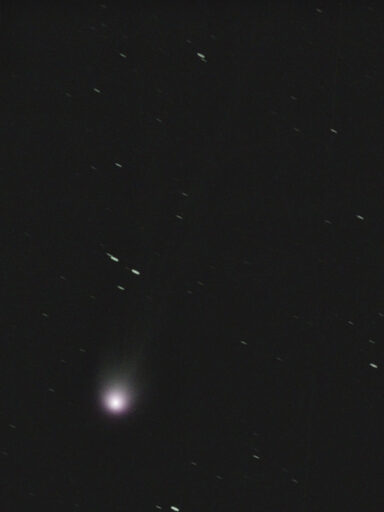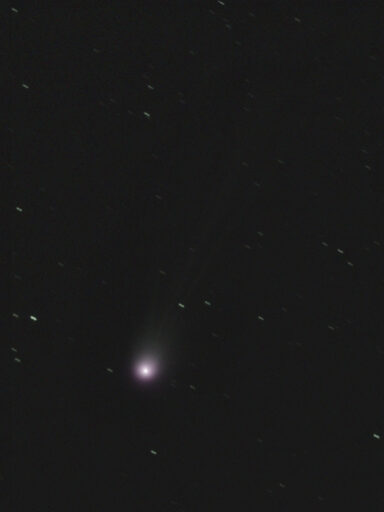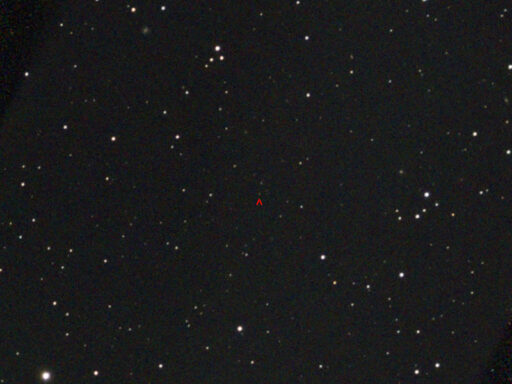
Telescope/Camera: Seestar S50
Filter: None
Exposure: (60 + 60)x10sec (20min) saved as FITS
Average Light Pollution: Bortle 8, fair transparency at dusk
Software: Nebulosity, Photoshop
This is another quick grab of Comet 12/Pons-Brooks before it got too far down in the before it was lost to the haze and light pollution over my western horizon. This images is the combination of subs taken over a 10-minute period through two Seestar S50s operating in parallel. As the images were being taken the comet dropped from 19 degrees over the horizon to just 17 degrees. Although the comet was an easy target for the Seestar, it was really tough to see in my 10×50 binoculars.


Recent Comments